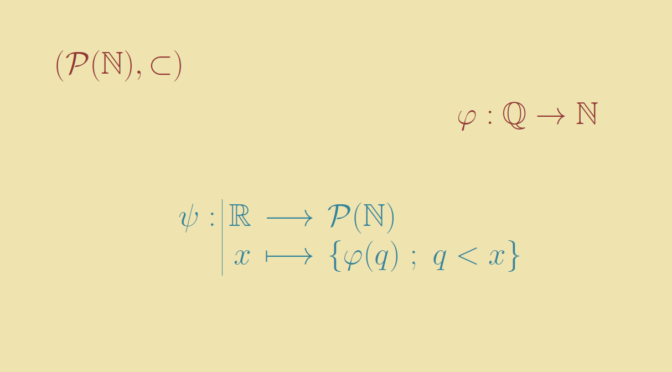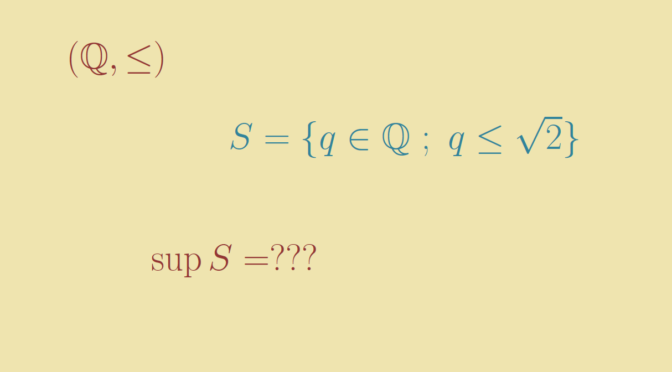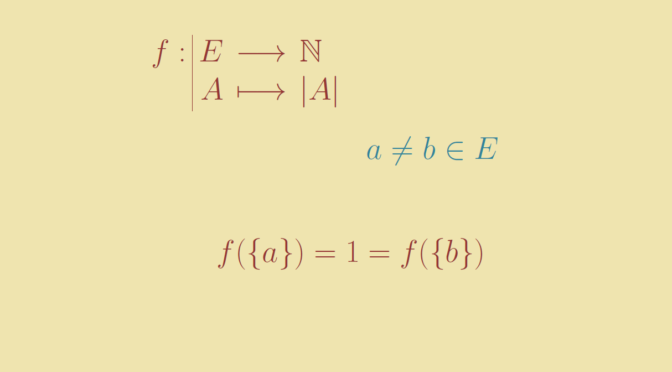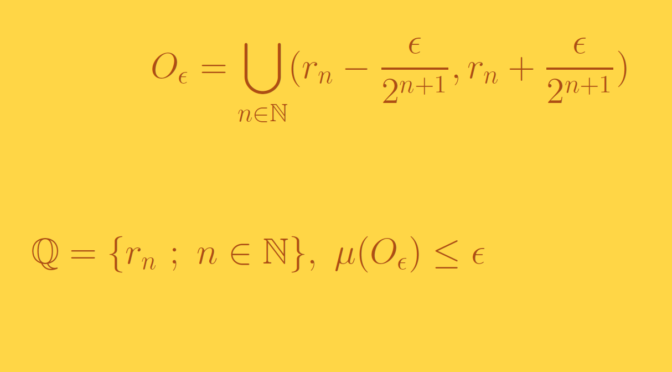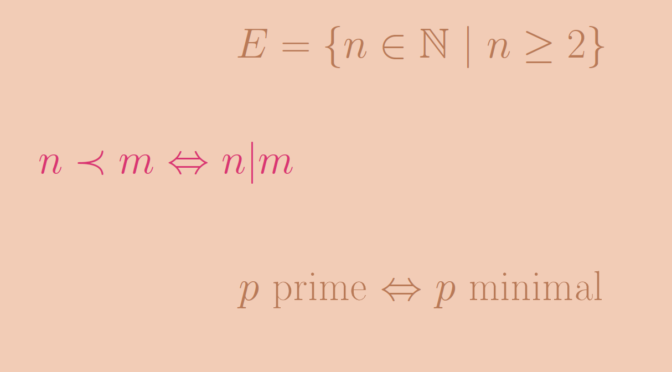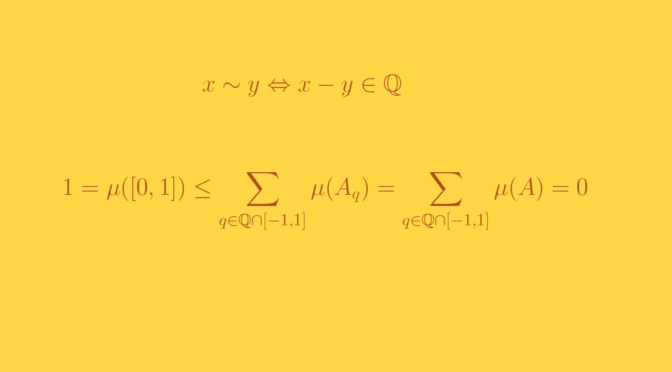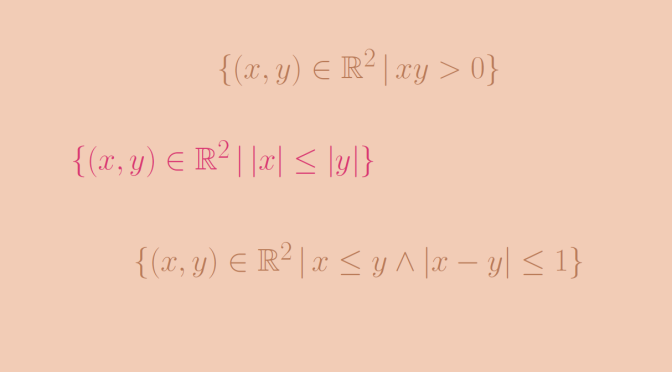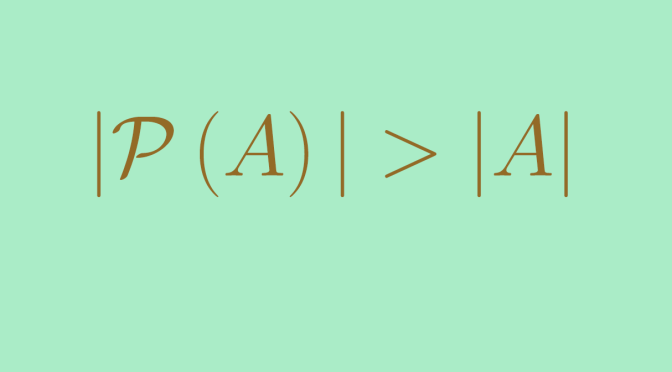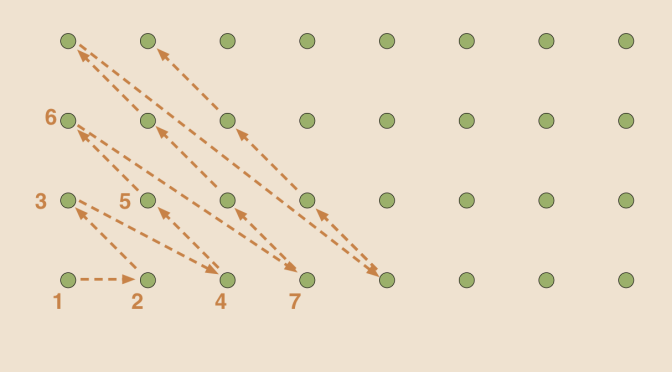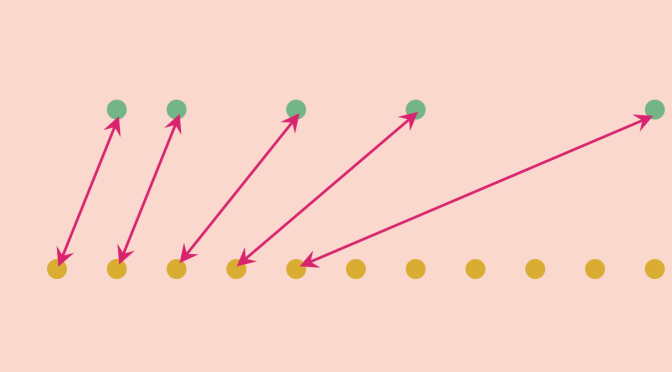Consider the set \(\mathcal P(\mathbb N)\) of the subsets of the natural integers \(\mathbb N\). \(\mathcal P(\mathbb N)\) is endowed with the strict order \(\subset\). Let’s have a look to the chains of \((\mathcal P(\mathbb N),\subset)\), i.e. to the totally ordered subsets \(S \subset \mathcal P(\mathbb N)\).
Some finite chains
It is easy to produce some finite chains like \(\{\{1\}, \{1,2\},\{1,2,3\}\}\) or one with a length of size \(n\) where \(n\) is any natural number like \[
\{\{1\}, \{1,2\}, \dots, \{1,2, \dots, n\}\}\] or \[
\{\{1\}, \{1,2^2\}, \dots, \{1,2^2, \dots, n^2\}\}\]
Some infinite countable chains
It’s not much complicated to produce some countable infinite chains like \[
\{\{1 \},\{1,2 \},\{1,2,3\},…,\mathbb{N}\}\] or \[
\{\{5 \},\{5,6 \},\{5,6,7\},…,\mathbb N \setminus \{1,2,3,4\} \}\]
Let’s go further and define a one-to-one map from the real interval \([0,1)\) into the set of countable chains of \((\mathcal P(\mathbb N),\subset)\). For \(x \in [0,1)\) let \(\displaystyle x = \sum_{i=1}^\infty x_i 2^{-i}\) be its binary representation. For \(n \in \mathbb N\) we define \(S_n(x) = \{k \in \mathbb N \ ; \ k \le n \text{ and } x_k = 1\}\). It is easy to verify that \(\left(S_n(x))_{n \in \mathbb N}\right)\) is a countable chain of \((\mathcal P(\mathbb N),\subset)\) and that \(\left(S_n(x))\right) \neq \left(S_n(x^\prime))\right)\) for \(x \neq x^\prime\).
What about defining an uncountable chain? Continue reading An uncountable chain of subsets of the natural numbers

